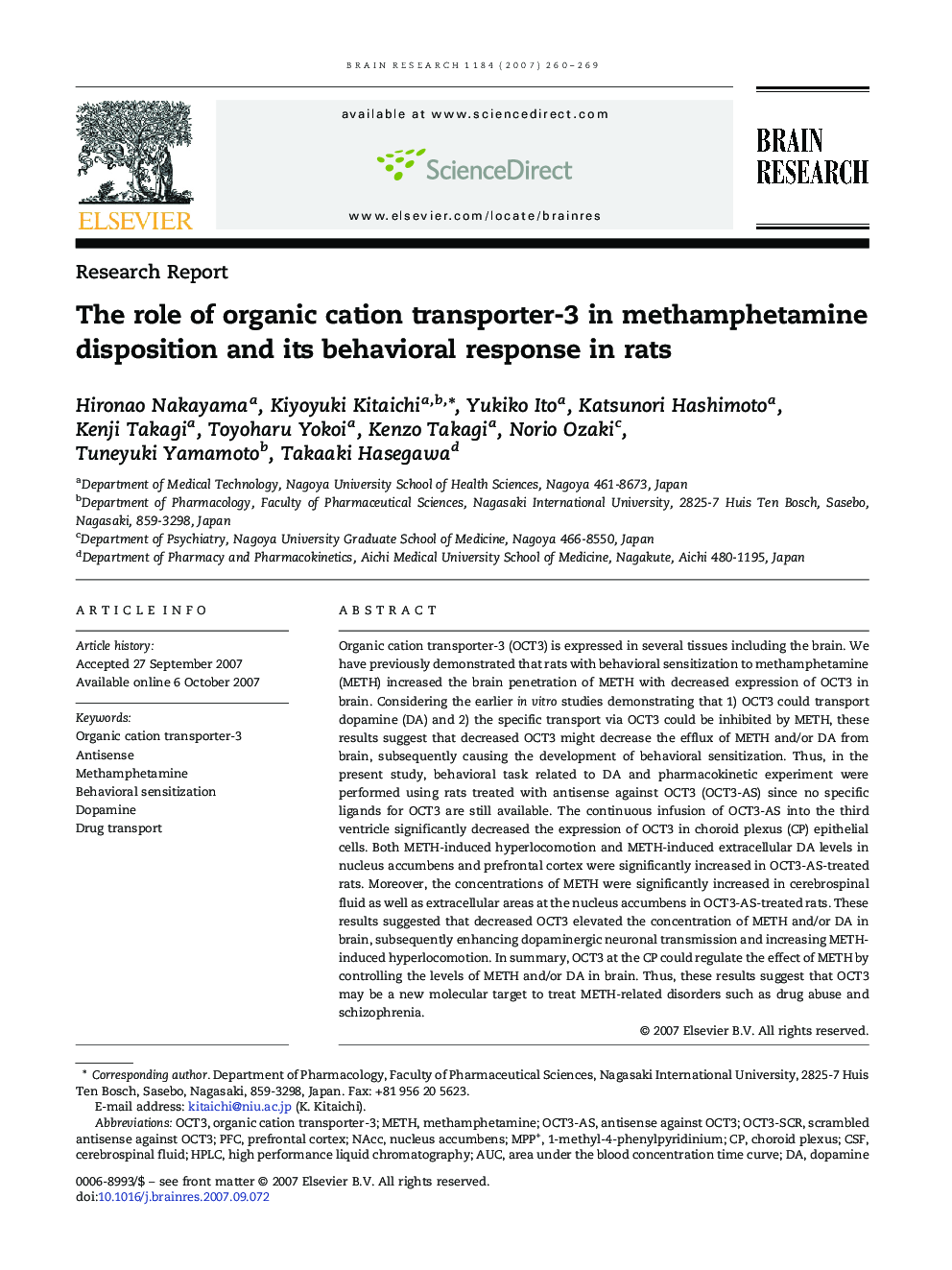| کد مقاله | کد نشریه | سال انتشار | مقاله انگلیسی | نسخه تمام متن |
|---|---|---|---|---|
| 4330360 | 1614255 | 2007 | 10 صفحه PDF | دانلود رایگان |

Organic cation transporter-3 (OCT3) is expressed in several tissues including the brain. We have previously demonstrated that rats with behavioral sensitization to methamphetamine (METH) increased the brain penetration of METH with decreased expression of OCT3 in brain. Considering the earlier in vitro studies demonstrating that 1) OCT3 could transport dopamine (DA) and 2) the specific transport via OCT3 could be inhibited by METH, these results suggest that decreased OCT3 might decrease the efflux of METH and/or DA from brain, subsequently causing the development of behavioral sensitization. Thus, in the present study, behavioral task related to DA and pharmacokinetic experiment were performed using rats treated with antisense against OCT3 (OCT3-AS) since no specific ligands for OCT3 are still available. The continuous infusion of OCT3-AS into the third ventricle significantly decreased the expression of OCT3 in choroid plexus (CP) epithelial cells. Both METH-induced hyperlocomotion and METH-induced extracellular DA levels in nucleus accumbens and prefrontal cortex were significantly increased in OCT3-AS-treated rats. Moreover, the concentrations of METH were significantly increased in cerebrospinal fluid as well as extracellular areas at the nucleus accumbens in OCT3-AS-treated rats. These results suggested that decreased OCT3 elevated the concentration of METH and/or DA in brain, subsequently enhancing dopaminergic neuronal transmission and increasing METH-induced hyperlocomotion. In summary, OCT3 at the CP could regulate the effect of METH by controlling the levels of METH and/or DA in brain. Thus, these results suggest that OCT3 may be a new molecular target to treat METH-related disorders such as drug abuse and schizophrenia.
Journal: Brain Research - Volume 1184, 12 December 2007, Pages 260–269